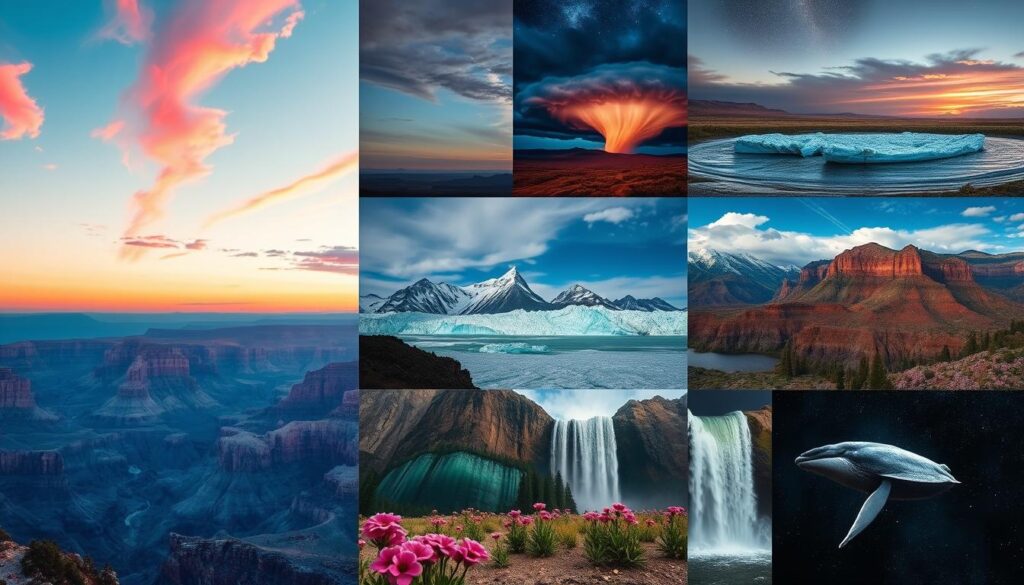Have you ever wondered about the amazing natural wonders in the United States? From the Grand Canyon’s towering cliffs to the Northern Lights, the country is full of incredible sights. This article explores 10 natural wonders in the USA, showing off their beauty and power.
You’ll learn about changes in the earth, unusual events, and stunning ecosystems. These stories bring these wonders to life. As we explore each phenomenon, you’ll discover how they came to be and how to see them yourself. Let’s start our journey into America’s beautiful and varied natural world!
Key Takeaways
- The USA is home to incredible geological formations like the Grand Canyon and active geysers in Yellowstone.
- An astonishing 500 geysers can be found in Yellowstone National Park, showcasing nature’s remarkable power.
- The Great Smoky Mountains are famous for their synchronous fireflies, creating magical nighttime displays in late spring.
- Phenomena such as bioluminescent waves and ice caves reveal the striking diversity of ecosystems in the US.
- The Northern Lights captivate viewers in Denali National Park, particularly between September and April.
- Unique sights like Thor’s Well and the singing sands at Great Sand Dunes National Park highlight the diverse geological features across the country.
- Exploring these natural phenomena provides insight into the stunning beauty and complexity of the American landscape.
The Formation of the Grand Canyon
The Grand Canyon is a stunning example of nature’s power. It shows us the Earth’s rich geological history. Its creation is a fascinating story that spans nearly two billion years.
Many geological events have shaped the Grand Canyon. These include erosion, sedimentation, and the uplifting of land. These processes have made this iconic landscape what it is today.
Geological History and Formation Process
The rocks at the Grand Canyon tell a story of almost two billion years. The area was uplifted between 70 and 30 million years ago. This uplift helped create the canyon’s dramatic terrain.
As the Colorado Plateau rose, it reached elevations up to 9,000 feet. This slow rise was the start of the Grand Canyon’s transformation.
About 5-6 million years ago, the Colorado River began carving through the rock. It cut through layers, showing off amazing features. The top layer, the Kaibab Limestone, was once at the ocean’s bottom.
The Great Unconformity is a fascinating part of the Grand Canyon’s geology. It shows rocks from 250 million years ago next to rocks over 1.2 billion years old. This gap in the geological record is striking.
Geological events have made the Grand Canyon even more complex. The Laramide Orogeny, about 70 million years ago, uplifted the Colorado Plateau. This uplift was influenced by subduction and isostatic adjustments.
The Rio Grande Rift has been forming since 30 to 35 million years ago. It has shaped the landscape into a stunning natural wonder.
Visiting the Grand Canyon
Visitors can explore many attractions and viewpoints at the Grand Canyon. Hiking trails offer stunning views of cliffs and rock layers. The South Rim is accessible and offers breathtaking views. The North Rim is less crowded and serene.
Don’t miss the sunrise or sunset. The light dancing across the canyon is unforgettable.
- Popular hiking trails include Bright Angel Trail and South Kaibab Trail.
- Plan your visit during the cooler months for optimal hiking conditions.
- Make sure to bring plenty of water and snacks for your hikes.
- Consider visiting designated viewpoints like Mather Point for impressive views.
The Grand Canyon is more than a beautiful place. It shows the complex history of geological phenomena. Visiting the Grand Canyon lets you appreciate its beauty and the forces of nature that created it.
Volcanic Activity at Yellowstone
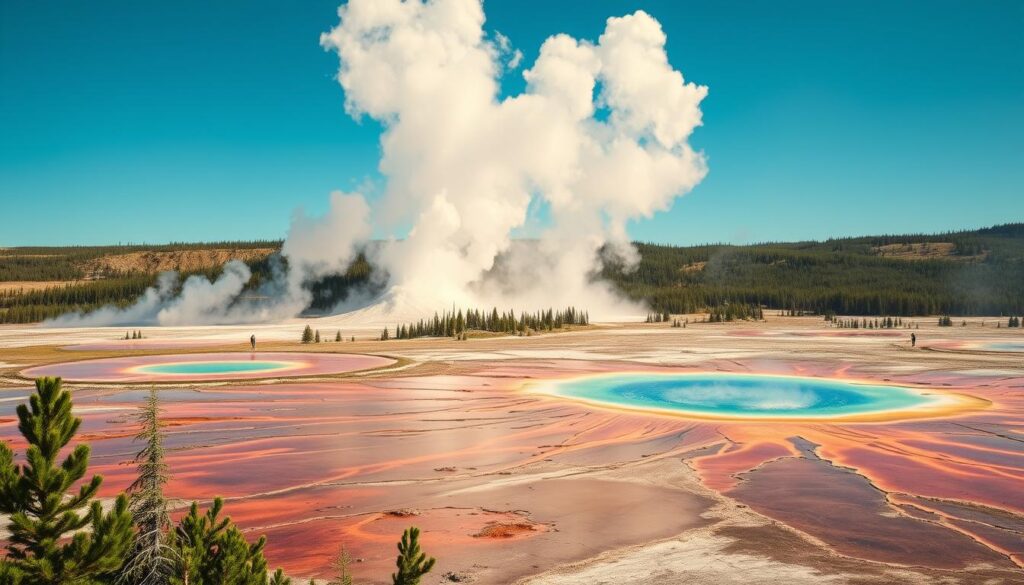
Yellowstone National Park is known for its stunning views and volcanic activity. It has the world’s largest active volcanic system. This park shows off amazing geothermal features that tell its geological story. These features are part of the natural phenomena USA that draw visitors.
The Geysers of Yellowstone
The park has over 500 geysers, making it a top spot for geyser watching. Old Faithful is the most famous, known for its regular eruptions. The geysers, hot springs, and fumaroles are all thanks to the park’s supervolcano and its volcanic eruptions in Yellowstone.
Let’s look at some key events in Yellowstone’s volcanic history:
| Event | Approximate Age | Description |
|---|---|---|
| First Super Eruption | 2.1 million years ago | Started the park’s volcanic activity, changing its landscape. |
| Second Significant Eruption | 1.3 million years ago | Occurred at the western edge of the first caldera. |
| Recent Major Eruption | 631,000 years ago | Created the current 30-by-45-mile-wide Yellowstone Caldera. |
| Formation of West Thumb | 174,000 years ago | Resulted from another volcanic eruption. |
| Recent Eruptions | Past 80,000 years | Approximately 80 smaller eruptions have occurred, mainly nonexplosive. |
Geothermal Features and Ecosystems
The park’s ecosystems are rich around the geothermal features. Heated water creates perfect spots for unique microorganisms. The Grand Prismatic Spring is a colorful example of this.
The mix of geothermal features and ecosystems shows the park’s ecological balance. Scientists at the Yellowstone Volcano Observatory keep studying it. They aim to understand this natural phenomena USA better.
Earthquakes along the San Andreas Fault
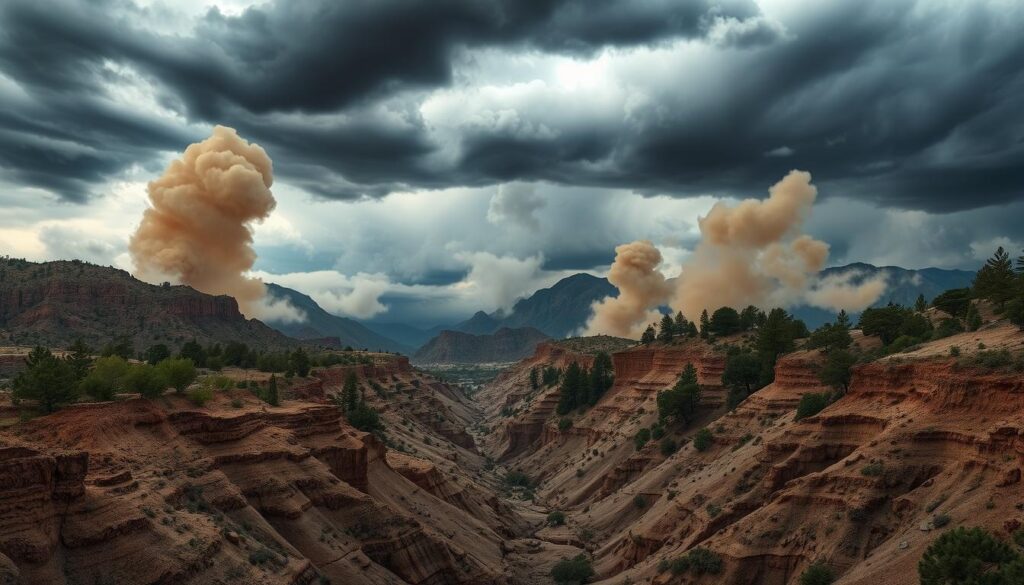
The San Andreas Fault is a major player in seismic activity in the USA. It stretches about 1,200 kilometers, marking the boundary between the Pacific and North American tectonic plates. This fault has caused many earthquakes in California, showing us the Earth’s dynamic nature. Learning about these geological processes helps communities prepare for natural disasters.
Understanding Seismic Activity
Seismic activity in this area comes from the Pacific Plate moving north against the North American Plate. The plates move at a rate of 2 inches per year, building up stress. This stress is released in earthquakes. The San Andreas Fault has three segments: northern, central, and southern. Each segment behaves differently, like the aseismic creep in the central segment.
Studies show that only 75% of the plate motion is along the San Andreas Fault and its branches. Big earthquakes like the 1906 San Francisco earthquake, with a magnitude of 8.3, and the 1857 earthquake in Southern California, have happened here. These events show the big risk from the San Andreas Fault.
The Impact of Major Earthquakes
Earthquakes with a Richter value of 5 or higher can be damaging, especially in crowded areas. The 1906 San Francisco earthquake killed about 3,000 people. These events have shaped how communities prepare for future earthquakes.
The San Andreas Fault has been active for 15 to 20 million years. It has shaped the landscape, creating the Coast Ranges and Transverse Ranges. Scientists watch seismic gaps to predict when a big earthquake might happen. Knowing about seismic activity is key to staying safe in earthquake-prone areas.
Tornado Alley
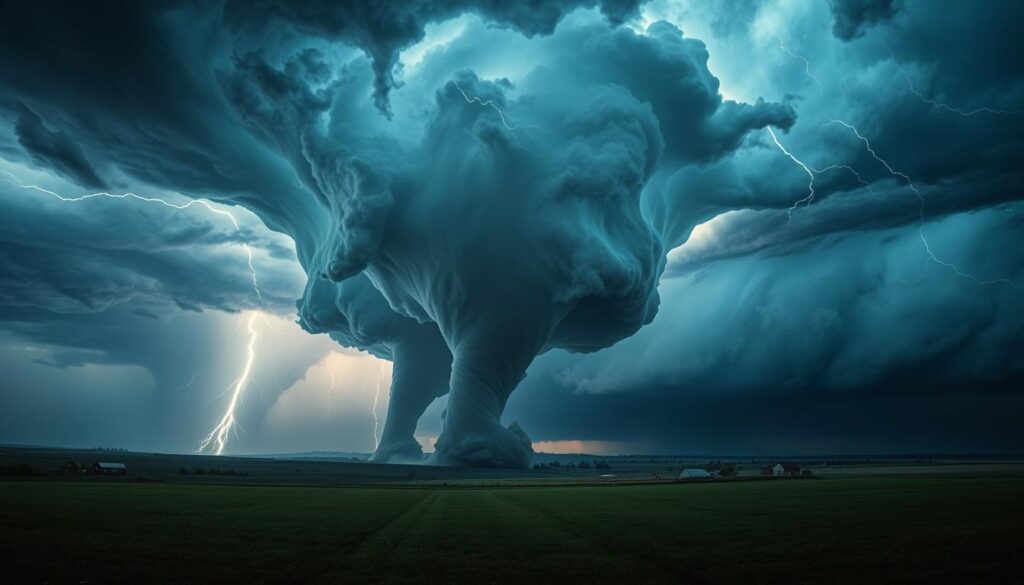
Tornadoes in Tornado Alley are some of the most significant natural events in the US. This area, from Texas to eastern Colorado, sees a lot of these storms. Knowing how tornadoes form helps you understand and prepare for them.
The Science Behind Tornado Formation
Several factors contribute to tornado formation. Warm, moist air from the Gulf of Mexico meets cold, dry air from Canada. This mix creates unstable weather, leading to severe thunderstorms. If conditions are right, a rotating updraft called a mesocyclone can form.
This rotation is key for tornadoes to form. It can cause tornadoes to quickly develop in Tornado Alley. Doppler radar helps track storms, giving forecasters time to warn people about tornadoes.
Safety Tips During Tornadoes
Knowing how to stay safe during tornadoes is crucial in Tornado Alley. When a tornado warning comes, act fast. Here are some important tips:
- Find a sturdy building to hide in, like a basement or an interior room away from windows.
- Have an emergency kit ready with water, food, and medical supplies.
- Keep an eye on weather alerts with your phone or a weather radio.
- If you’re outside, don’t get in a car. Find a low spot to lie down and cover your head with your arms.
Following these tips can greatly improve your safety during tornadoes.
Hurricanes Hitting the Gulf Coast
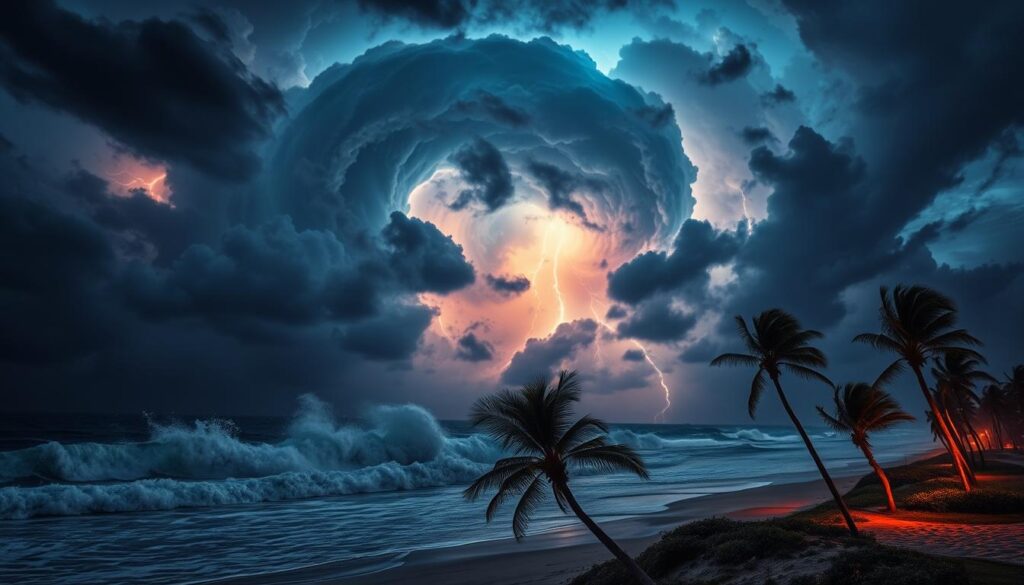
The Gulf Coast sees many hurricanes each year, especially from June to November. Knowing the hurricane season timeline helps you get ready for these tough storms. Knowing when and where hurricanes hit helps communities prepare and recover better.
The Hurricane Season Timeline
The Atlantic hurricane season is from June 1 to November 30. The Gulf Coast sees the most hurricanes from August to October. Some big hurricanes in history include:
| Year | Hurricane Name | Category | Estimated Deaths | Damage (Inflation Adjusted) |
|---|---|---|---|---|
| 1900 | Galveston Hurricane | 4 | 8,000 | $30 million |
| 1926 | Great Miami Hurricane | 5 | 373 | $90 billion |
| 1935 | Florida Keys Labor Day Hurricane | 5 | 408 | $6 million |
| 2005 | Hurricane Katrina | 5 | 1,800+ | $125 billion |
| 2021 | Hurricane Ida | 4 | 107 | $75 billion |
Preparation and Recovery Efforts
Communities along the Gulf Coast work hard to prepare for and recover from hurricanes. Important steps include:
- Creating emergency plans with evacuation routes.
- Setting up family communication plans.
- Stocking up on food, water, and medicine.
- Using local resources and social media for updates.
After a hurricane, rebuilding and supporting affected people are key. Programs help with financial and emotional support. This shows the strength of communities facing hurricanes.
Aurora Borealis (Northern Lights) in the USA
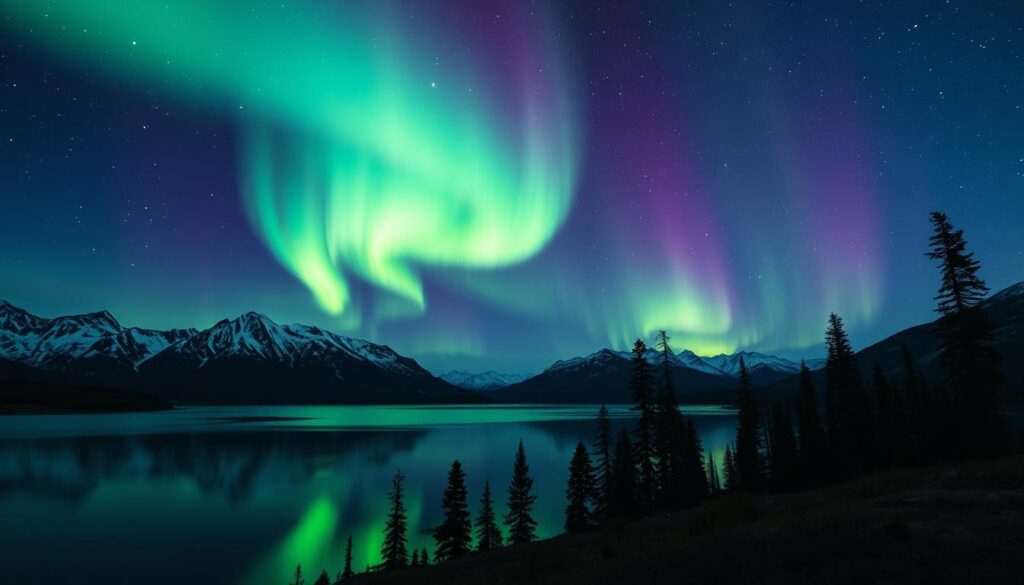
The Aurora Borealis, or Northern Lights, is a magical natural wonder in America. It happens when charged particles from the sun hit Earth’s atmosphere. This creates a stunning light show. Knowing where and when to see it makes the experience even better.
For the best Northern Lights viewing, visit in winter, from late September to early April. Places near the magnetic poles are best. In the USA, national parks like Denali, Isle Royale, and Voyageurs National Park are great spots.
- Oxygen particles create green lights at altitudes of 97 kilometers (60 miles) and red lights at 322 kilometers (200 miles).
- Nitrogen particles contribute blue or purplish-red hues to the display.
- The lights may create sounds, producing static or hissing noises due to atmospheric interactions.
- Curiously, even planets such as Jupiter and Saturn showcase similar auroras.
The aurora borealis and its counterpart, the aurora australis, light up the skies at the same time. Inuit legend says these lights are spirits playing with a walrus skull. Seeing the Northern Lights is more than just a visual treat. It connects you to history, science, and art.
10 Natural Phenomena That Have Occurred in the USA
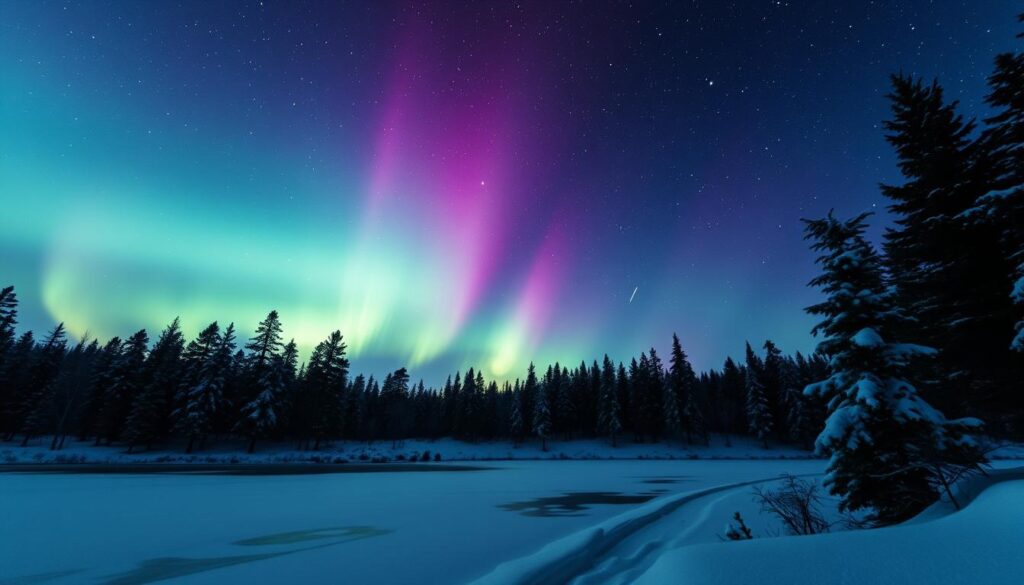
Seeing the Aurora Borealis is a memorable experience. The United States offers many chances to see this amazing light show. To get the best view, plan your trip carefully. Here are some tips to make your Northern Lights experience unforgettable.
Viewing Tips for the Aurora Borealis
- Choose the right location: States like Alaska, Minnesota, and North Dakota are ideal for viewing the Northern Lights.
- Check the forecast: Clear skies and low light pollution make for optimal viewing conditions.
- Timing matters: Late winter and early spring are among the best times to catch the lights due to longer nights.
- Stay warm: Dress in layers to stay comfortable during lengthy outdoor sessions.
- Be patient: Sometimes the auroras take time to show up, so find a cozy spot and enjoy the night sky.
Learning about the Aurora Borealis makes your experience even better. The science behind it shows how the night sky turns into a stunning canvas of colors.
Science Behind the Northern Lights
The Aurora Borealis happens when solar particles hit Earth’s atmosphere. This creates the beautiful colors we see. Oxygen makes green and red, while nitrogen produces purples and blues. Knowing this science makes watching the lights even more special.
Meteor Showers Across America
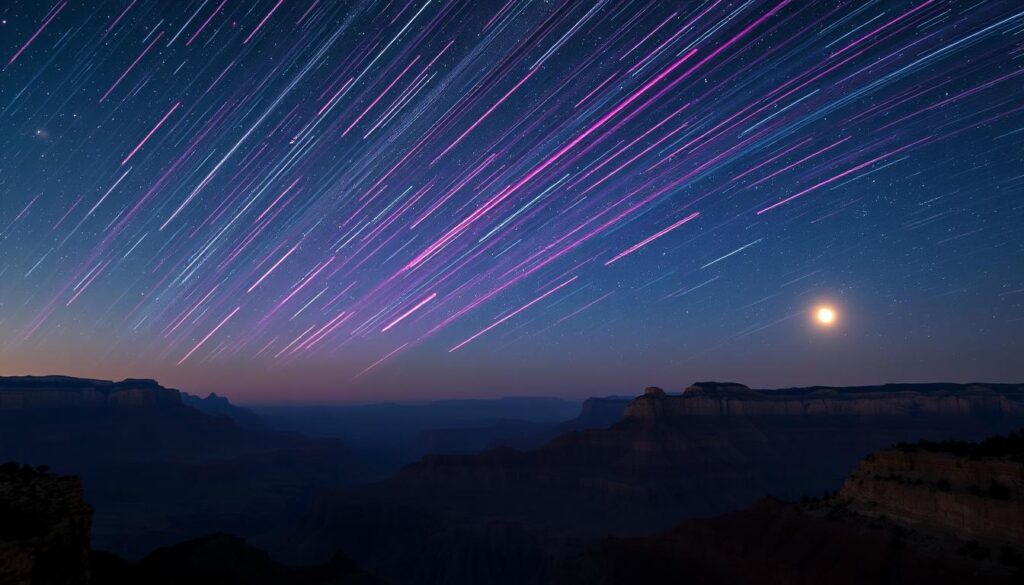
Meteor showers in the USA are a great chance for stargazers to see amazing sights. Earth passes through comet trails, causing these spectacular displays. The best times to see them are in January, August, and December. Fans gather at top spots for the best views.
Notable Meteor Shower Events
The Quadrantids in January, Perseids in August, and Geminids in December are highlights. Each offers a unique chance to see the sky light up. The Leonid meteor storm of 1833 was especially memorable, with up to 150,000 meteors per hour.
Best Spots for Stargazing
Choosing the right spot is key for a great meteor shower view. Here are some top places in the USA:
- Cherry Springs State Park, Pennsylvania: This Dark Sky Park is perfect for many meteor showers.
- Big Bend National Park, Texas: An International Dark Sky Park with areas for stargazing and less light pollution.
- Death Valley National Park, California: Famous for its dark skies, it’s great for meteor showers all year.
- Great Basin National Park, Nevada: Offers great meteor shower views and activities like tours, hiking, and camping.
For a great meteor shower view, check the moon phases and get there early. Bring warm clothes, blankets, binoculars, and chairs. These tips will make your experience unforgettable.
Wildfires in California
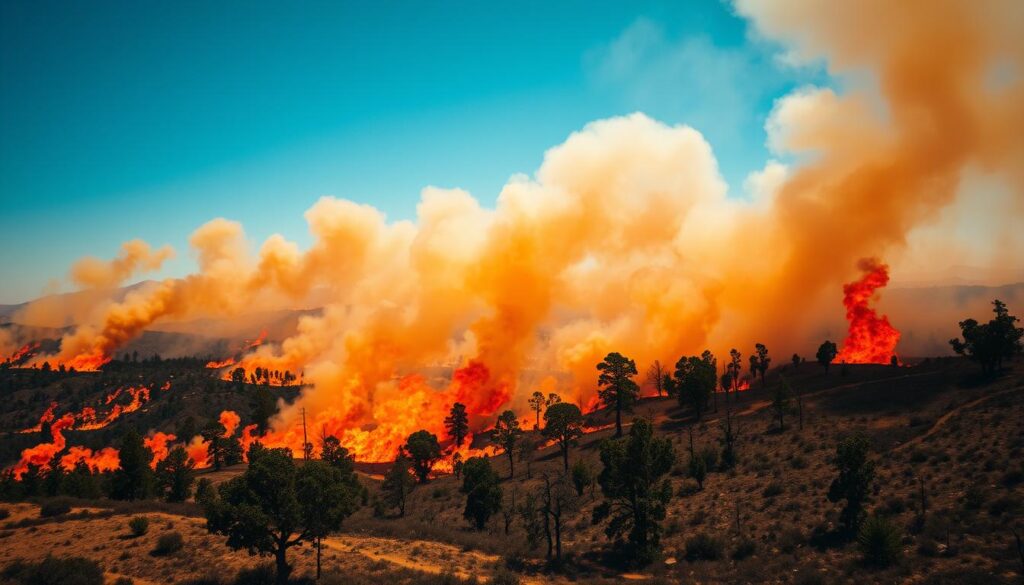
Wildfires in California are very destructive, changing the state’s landscape and affecting communities. It’s important to know what causes these fires to prevent them. This section looks at the main reasons for wildfires and their big impact on nature and people.
Causes of Major Wildfires
Most wildfires in California start from human actions or natural events. Since 1980, people have caused a lot of fires on lands protected by CAL FIRE. Common causes include:
- Equipment use
- Downed power lines
- Intentional arson
- Natural occurrences like lightning strikes
Climate change also makes wildfires worse, leading to more fires. For example, in 2020, over 8,100 fires burned nearly 4.5 million acres.
The Ecological Impact of Wildfires
Wildfires in California do more than just burn land. A 2023 study found that 58% of wildfire-affected areas happened between 2020 and 2021. This has big effects on local ecosystems. Here are some of the ecological impacts:
| Impact Type | Description |
|---|---|
| Habitat Destruction | Many species lose their homes, causing a ripple effect in the food chain. |
| Soil Erosion | Wildfires strip vegetation, leading to increased soil erosion and reduced fertility. |
| Air Quality Degradation | Smoke and ash from wildfires negatively affect air quality, impacting human health. |
| Biodiversity Loss | Wildfires threaten many species, leading to potential extinction and biodiversity decline. |
Knowing what causes wildfires and their impact is key to preventing them and restoring ecosystems. While wildfires are natural, managing them is crucial to protect the land and its creatures.
Conclusion
This journey through natural wonders has shown you the beauty and power of the United States’ landscape. You’ve seen the Grand Canyon’s layers of rock and the Aurora Borealis lighting up the sky. These sights prove the planet’s constant change.
Exploring natural phenomena also teaches us about the dangers they pose. Events like hurricanes, tornadoes, and wildfires can cause huge damage. Since 1980, the U.S. has lost over $1 billion to disasters.
Reflecting on these wonders, we see both their beauty and challenges. Knowing about these events helps us appreciate nature more. It also teaches us to be careful when exploring.
As you go on adventures, remember each event has its own story. Whether it’s meteor showers or storms, these experiences connect us to the Earth. They show us why we must protect these landscapes for the future.

